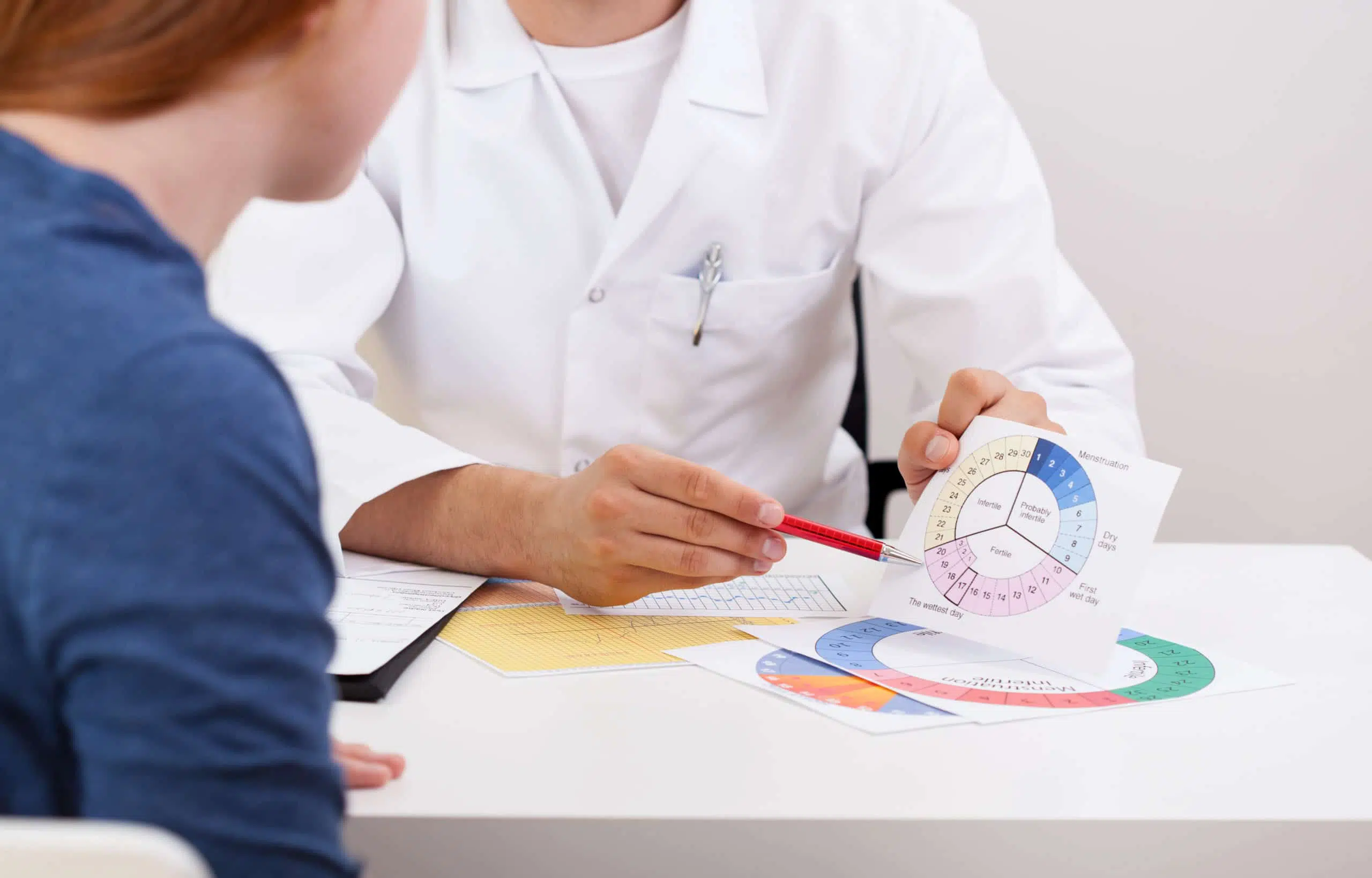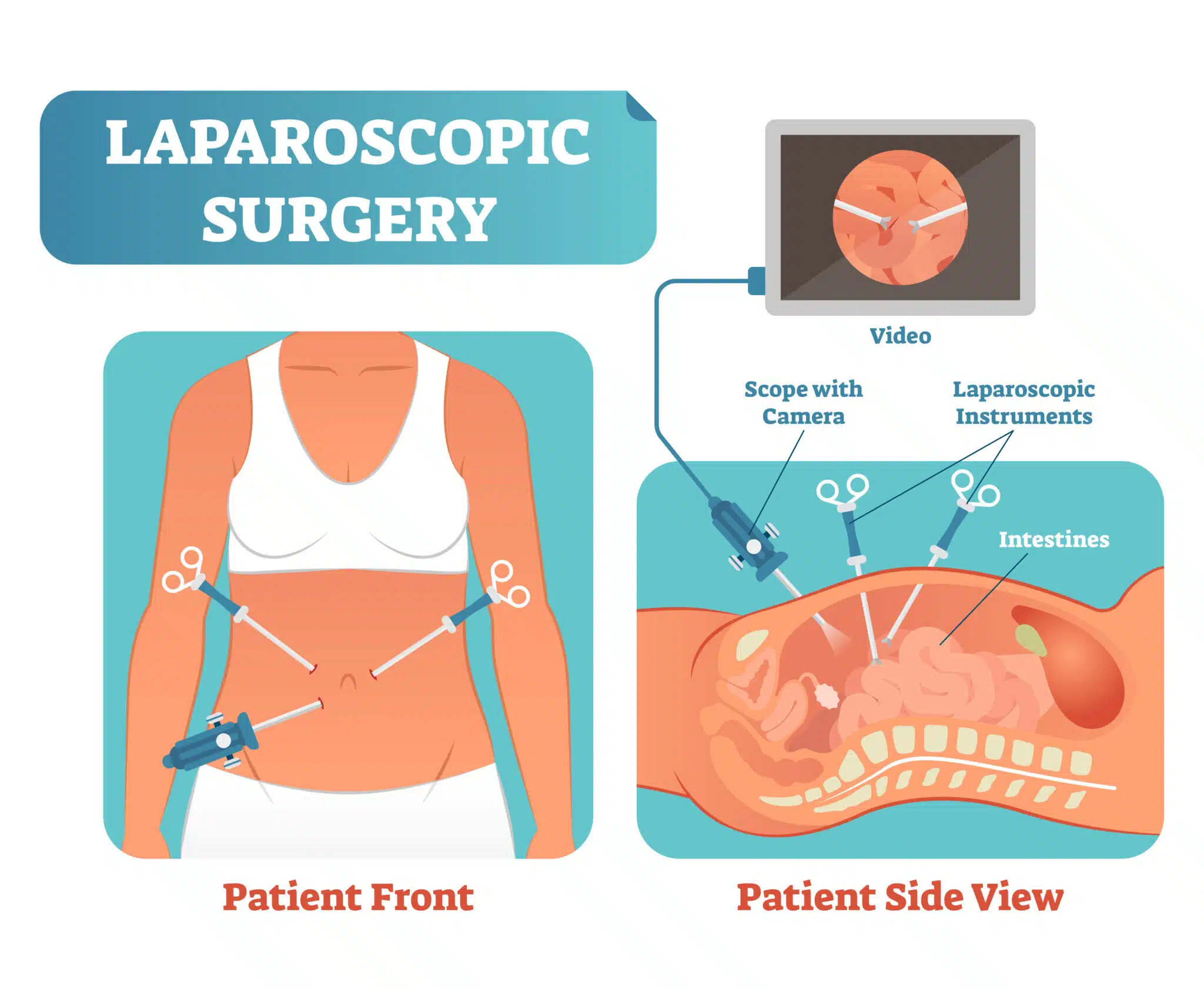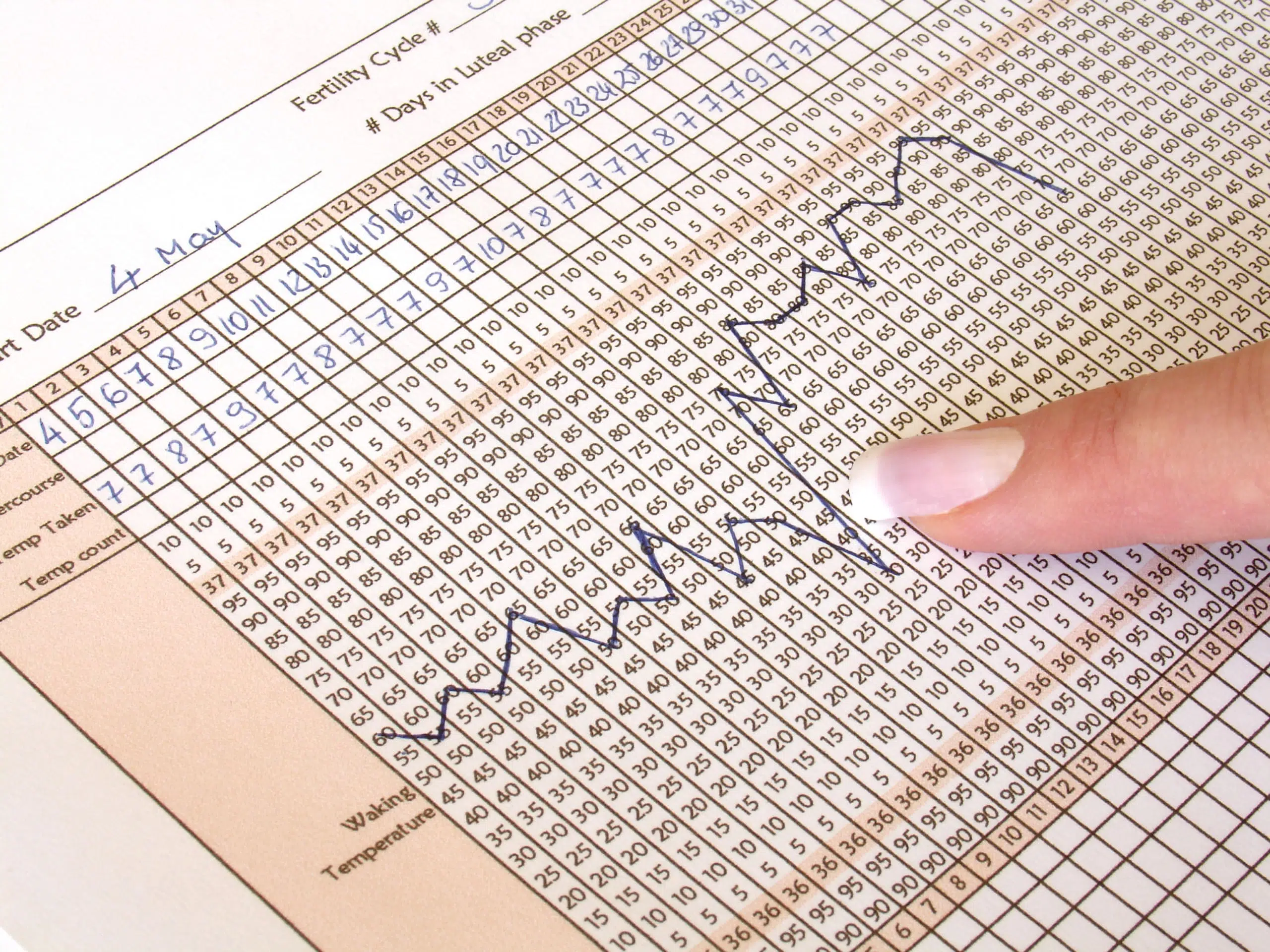Like thousands of couples across the country, Jacinta and Mike had tried unsuccessfully to conceive a baby. When a friend told them about NaProTECHNOLOGY, they thought they’d give it a try. To their utter joy, they were successful! According to the couple, “After three cycles of accurate tracking and becoming our own fertility experts, we felt ready to see the NaProTECHNOLOGY specialist. We never made it to the appointment; we conceived in our 3rd cycle of trying!”
NaProTECHNOLOGY (“NaPro”) has been a blessing to countless couples all around the world. It has helped women take control of their health and solved their medical problems, and it has helped strengthen marriages.
What Is NaProTECHNOLOGY?
NaProTECHNOLOGY, short for natural procreative technology, is a health science that helps women monitor and maintain their reproductive health. In addition, it can include surgical and medical treatments for reproductive problems. These techniques cooperate with the woman’s reproductive system rather than working against it.
NaProTECHNOLOGY has been found to help with numerous reproductive health problems. Among other things, it can help resolve:
- Infertility and miscarriage
- Menstrual cramps
- PMS symptoms
- Ovarian cysts
- Irregular bleeding
- Polycystic ovarian disease
- Postpartum depression
- Hormonal abnormalities
According to the NaProTECHNOLOGY site: the method “is a fertility-care based medical approach rather than a fertility-control approach to family planning and gynecological health.”
NaProTECHNOLOGY is very different from other gynecological treatments. Many of these treatments are merely Band-Aids that mask problems and treat their symptoms. The goal of NaProTECHNOLOGY is to actually find the root of problems and to solve them. In addition, the method helps women understand their bodies.
The Creighton Model
NaProTECHNOLOGY uses the Creighton Model FertilityCare™ System, a natural family planning method that helps women track their fertility. By this method, the woman uses charts to log information about her cycles and takes her temperature daily. She becomes familiar with the feel of her cervical mucus. When using this method, a woman truly learns about her body and comes to understand the way her cycles work. This helps her either achieve pregnancy or avoid it.
Couples who use this natural way to plan a family grow closer to each other. They learn to communicate more effectively. And they learn a mutual respect for each other’s bodies.
According to HLI’s Brian Clowes, natural family planning
increases the husband’s respect for his wife’s fertility and deepens his understanding of her psychology. It lets husband and wife share the responsibility for their fertility equally, thus living up to the ideal of “conscious parenthood,” which is the conceiving and bearing of children by choice and by will, truly the fruit of unselfish love. Finally, the wife appreciates being able to avoid the harmful effects of contraceptives and abortifacients. Many women deeply appreciate the “freeing” sensation they receive when they give up powerful drugs that suppress their natural body functions and take up NFP, becoming aware of the beauty and the power of their own fertility.
When used in conjunction with NaProTECHNOLOGY, the Creighton Model FertilityCare™ System helps both diagnose and treat reproductive health problems.
The NaPro Fertility Diet
In addition to tracking their cycles, women are encouraged to care for their whole bodies. One way to do this is by eating only good foods, and to that end, they should eat a healthful and beneficial diet. All bodies are different, and women should consult their personal doctors for dietary guidelines. However, NaPro doctors frequently recommend that women eat mostly natural and fresh foods.
Doctors recommend avoiding foods with processed flours and sugar, ingredients most often found in pre-packaged meals or fast foods. Women are also encouraged to eat plenty of fruits and vegetables.
While women can eat fat, they should avoid trans fats. In addition, they should eat whole-fat dairy; low-fat foods, including dairy, usually have sugar in place of the fat.
The ideal diet would also include tree nuts, fish, and a small amount of animal protein. A low-carb diet is also beneficial and helps reduce inflammation in the body. Many women, especially those who are unable to conceive, are encouraged to eat anti-inflammatory foods. Diets such as Paleo and Whole30 have guidelines for avoiding these types of foods.
When eating a diet rich in whole foods, women see their overall health and well-being improve. Inflammation decreases, and they begin to solve some of their health problems.
NaPro Surgery Techniques
Sometimes surgery is necessary to help repair a woman’s body. NaPro surgery does nothing that goes against Church teaching, nor does it destroy or suppress fertility.
Dr. Hilgers and his team have developed surgical methods that help fix the gynecological problems that afflict women.
For instance, laparoscopic surgery often successfully treats endometriosis by removing built-up tissue. An excess of tissue around the uterus can lead to pain and heavy bleeding and can make conception difficult; when this tissue is removed, women find it much easier to conceive.
Doctors can also perform surgery to remove cysts in the ovaries. Women who suffer from polycystic disease have enlarged ovaries because of the cysts, and as a result, they do not ovulate as often as other women. This, of course, makes it difficult to conceive.
Another surgical technique is called “near-contact” laparoscopy. In this method, the doctor uses a tool called a laparoscope, which helps him visualize the tissues of the uterus, ovaries, and tubes. This gives him a closer look at what is happening in the woman’s body. And when he can see the problem, he has a better chance of fixing it.
History of NaProTECHNOLOGY
Thomas W. Hilgers, MD, created NaProTECHNOLOGY after reading St. Paul VI’s 1968 encyclical Humanae Vitae. Hilgers wanted to help women address their healthcare in a manner that respects human life. He felt that there must be a better way to help women find solutions to gynecological problems. So he began to research natural fertility regulation.
Hilgers understood that healthcare approaches that rely on the pill or IVF are immoral. Further, they can and do result in the deaths of very young babies. Not only that, but the pill is harmful to the mother. IVF is very costly and doesn’t have a high success rate.
NaProTECHNOLOGY works with a woman’s natural cycles, never puts the mother’s health at risk, and never harms a baby.
In 1985, Hilgers founded the Saint Paul VI Institute. Located in a 14,000-square-foot center in Omaha, Nebraska, the Saint Paul VI Institute is an “international research, education, medical, and service center.” Its staff help women from all across the country.
The Saint Paul VI Institute specializes in “research, diagnosis, and treatment of women’s reproductive and gynecologic healthcare within a pro-life ethical framework.”
Through NaProTECHNOLOGY and the Creighton Model FertilityCare™ System, the St. Paul VI Institute is truly building a Culture of Life.
NaPro Success Stories
The success stories are easy to find; many sites have pages dedicated to them. Reading them, a woman cannot help but feel encouraged. There are stories of couples who had been unable to conceive and now have multiple children. There are stories of couples who feel emotionally closer because the fertility tracking system requires that they communicate and work together.
There are stories of women who lived for years with pain and received only treatment of symptoms—not solutions—from their doctors. With NaPro, these women found the cause of their pain and treated the problem.
There are stories of women who had repeated miscarriages but were finally able to carry a baby to term. There are stories of women with ovarian cysts who have, with the help of bioidentical hormones, been had their cysts dissolved and improved their health.
And then of course there’s the story of Jacinta and Mike, who had been unable to conceive but were finally blessed with a baby.
All of these people were able to work with their bodies to achieve a goal. And all are healthier—both physically and mentally—because of NaProTECHNOLOGY.
Effectiveness of NaProTECHNOLOGY
Dr. Hilgers and his team have had immense success with NaProTECHNOLOGY, and so have the other people trained in this method.
According to Verily magazine:
Data from small-scale clinical trials, NaPro clinics/practices, and the Pope Paul VI Institute (the research facility that developed, and continues to develop and teach, NaProTechnology), indicates that NaPro can yield real results for couples desperate for a baby, with success rates that far outpace those of IVF—sometimes doubling or even tripling the success rates of IVF, depending on the cause of infertility. According to one of the largest-scale studies done on the efficacy of NaPro Technology, more than 60 percent of NaPro patients were pregnant within two years of beginning treatment, and 70 percent were pregnant within three years of treatment. Other, smaller studies have seen similar results. An article from the American Medical Association Journal of Ethics concludes that “although achieving a live birth with NPT may take longer, it has a greater chance of occurring than with IVF.”
The positive statistics don’t stop there.
According to the St. Gianna Center, “NaProTECHNOLOGY treatment for infertility provided by the Pope Paul VI Institute, which includes surgical intervention by a fellowship trained NaPro Surgeon, has up to 80 percent effectiveness.”
In addition, NaProTECHNOLOGY is 95% effective in the treatment of PMS symptoms.
NaProTechnology has a 95.2% effectiveness rate in treating Premenstrual Dysphoric Disorder. By contrast, antidepressants have only a 43% effectiveness rate.
Further, women suffering from postpartum depression who seek NaProTechnology treatment have found that symptoms often improve within 30 days. Studies have shown a 92.4 – 96.75% effectiveness rate, much higher than medications that can also have many side effects. And NaPro works in a shorter amount of time.
Should I Be Using NaPro?
As with any medical practice or intervention, it is critical to understand your body’s needs. NaPro seeks to use a holistic and natural approach to fertility, and it is safer than other fertility treatments. Talk with your doctor about NaPro and your fertility needs and ask whether NaPro is right for you!
Where Can I Get NaPro Treatment?
While it may seem that NaPro would be a cost-prohibitive technology, those seeking treatment will feel comforted to know that oftentimes the cost is covered—at least partially—by insurance because it treats an underlying health condition. This is not the case with IVF, which can cost tens of thousands of dollars out-of-pocket. Because each woman’s body is different and the treatment varies depending on the cause of infertility, we can’t pinpoint a certain cost for NaProTECHNOLOGY. It depends on what the problem is and what types of surgeries or techniques the doctors have to employ. But take solace in the fact that insurance will likely cover some of the cost and that the doctors will work with you to find the underlying cause of illness.
Talking to a knowledgeable professional who wants to help you is a vital first step. There are many doctors around the country who are trained in NaPro and who can guide you through treatments or to help you decide if NaPro is right for you.
FertilityCare Centers of America offers a list of practicing physicians throughout the US. You can find the list at fertilitycare.org/find-a-mc.
Depending on where you’re located or if you’re willing to travel, these facilities all offer NaProTechnology and may be good options:
- Tepeyac OB/GYN: a pro-life obstetrics and gynecology practice in the Washington, DC area
- The St. Gianna Clinic: located in Wisconsin
- OSF HealthCare has offices throughout Illinois
- Veritas Fertility and Surgery: a fertility care and surgery center located in St. Louis, Missouri
- And of course, the St. Paul VI Institute in Nebraska is fantastic option as well.
If you are not near these places, a google search of “NaProTECHNOLOGY centers near me” will also pull up local facilities that can help.
Remember, you are not alone. Help is available.
Final Thoughts
When used together, NaProTECHNOLOGY and the Creighton Model FertilityCare™ System treat the whole woman.
These methods help solve problems many women didn’t think were solvable. They help women understand their bodies and couples grow closer. They help build families.
And best of all, they follow Christ’s teachings as outlined in Humanae Vitae.
Dr. Hilgers truly has helped build a Culture of Life.
This article was most recently updated in April 2023.
Susan Ciancio has a BA in psychology and a BA in sociology from the University of Notre Dame, with an MA in liberal studies from Indiana University. Since 2003, she has worked as a professional editor and writer, editing both fiction and nonfiction books, magazine articles, blogs, educational lessons, professional materials, and website content. Fourteen of those years have been in the pro-life sector. Currently Susan writes weekly for HLI, edits for American Life League, and is the editor of its Celebrate Life Magazine. She also serves as executive editor for the Culture of Life Studies Program, an educational nonprofit program for k-12 students.











I wish to learn NaProTechnology to able to help women who are having difficult to convince